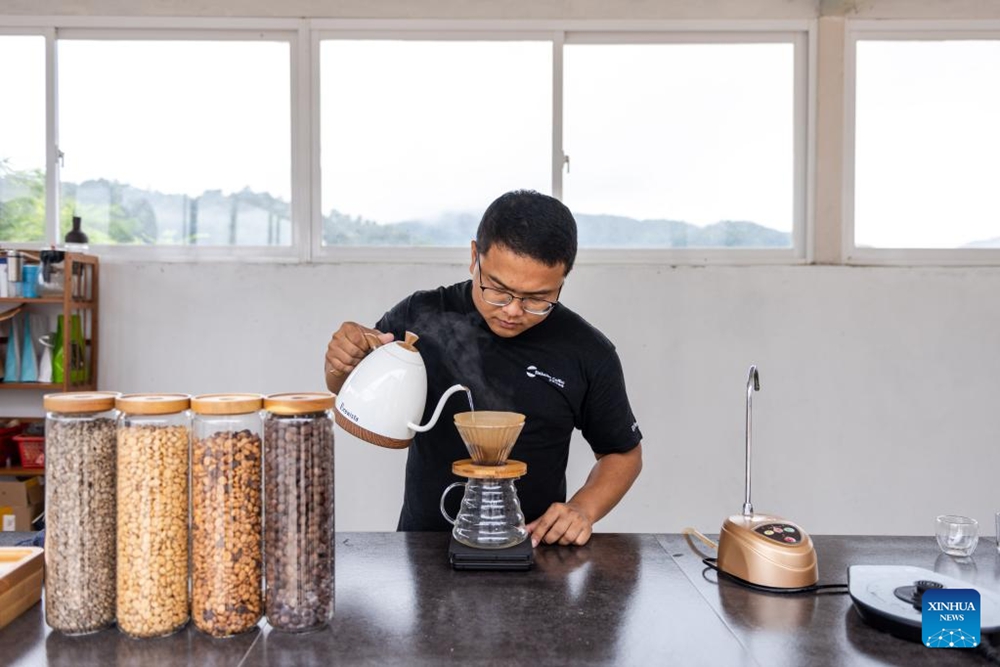Tea, coffee cause Pu'er tourism to grow by 78.03% in H1

A barista pours over drip coffee at his coffee farm in Dakaihe village of Pu'er City, southwest China's Yunnan Province, June 24, 2022. (Xinhua/Cao Mengyao)
Thanks to appealing tea and coffee tours, the Pu'er city in the southwest of Yunnan province received 27.72 million visitors in the first half of the year, and its tourism revenue of 31.2 billion yuan represented a year-on-year increase of 78.03%.
Pu'er city is the only Yunnan locality that shares borders with Vietnam, Laos and Myanmar. With its vibrant ethnic cultures, Pu'er is the origin of the Ancient Tea Horse Road and it is known as "source of global tea" and "home to Chinese coffee."
By developing a series of tea-themed scenic spots, Tea farmers and traders in Pu'er have increased their income by extending the tea industrial chain while fusing tea elements into tourism, said Su Qiwu, deputy director of Pu'er Municipal Culture and Tourism Bureau.
Zhang Guangming, a villager near the Jingmai Mountain ancient tea garden in the city’s Lancang county, opened a tea shop, a homestay and a restaurant. As more tourists have come, Zhang's income has also grown over the months.
“My roasted-tea shop is popular among tourists, with hundreds of visitors experiencing the distinct tea and ethnic cultures of Hani, Yi, Lahu and Dai,” said Fang Rong, who operates a roasted-tea shop in the Simao district of Pu'er city.
Zhang Yong, chief of the market-branding section of Pu'er Tea and Coffee Industry Development Center, mentioned that Pu'er coffee is another major driver of local tourism. Pu'er is also China's largest coffee farming area, with the highest coffee production and best quality of coffee. The number of coffee shops has increased to 166 from 20 two years ago.
In the suburbs of the city’s Simao district, Liao Hongwen opened a coffee house that can cater to the needs of both tourists and academicians. Now, hundreds of visitors and research groups would come daily, bringing a substantial increase in income.
Besides the tea and coffee elements, Pu’er cultural tourism also benefited from the Lahu dance that originates from the Banli village in Lancang county.
Drawing in crows of visitors, the village’s 140-member dancing troupe is enriching the 1,532 villagers there.
Source: Xinhua; trans-editing by Guo Yao








